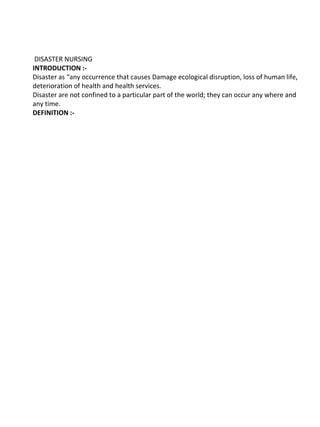Disaster nursing involves adapting professional nursing skills to recognize and meet the physical and emotional needs of those affected by disasters. There are three phases to disasters: pre-impact, impact, and post-impact. Nurses play an important role in all phases through tasks like rapid needs assessments, triage, emergency care, and supporting long-term recovery. Effective disaster response requires coordination between nurses, emergency services, and aid organizations.


![... [DR. SRIDHAR RAO]
TYPES OF DISASTER :-
1.Natural Disaster :-
tornados, hailstorms, tsunami, floods, Earthquakes, Communicable disease etc.
2.Man-Made Disaster :-
fires, explosions, toxic materials, pollution, terrorist](https://image.slidesharecdn.com/disasternursing-230221064052-2b0cbb53/85/DISASTER-NURSING-docx-3-320.jpg)
































